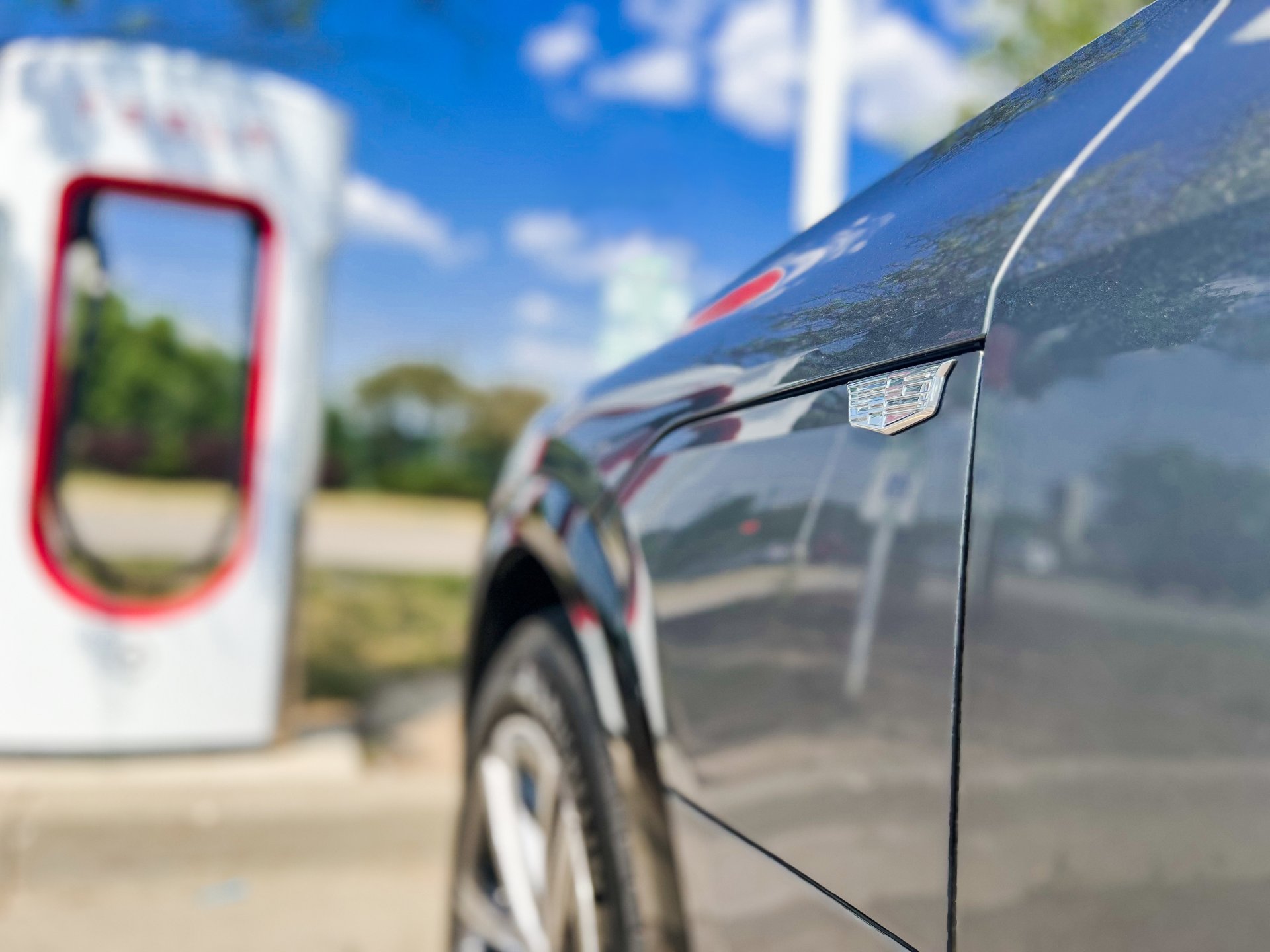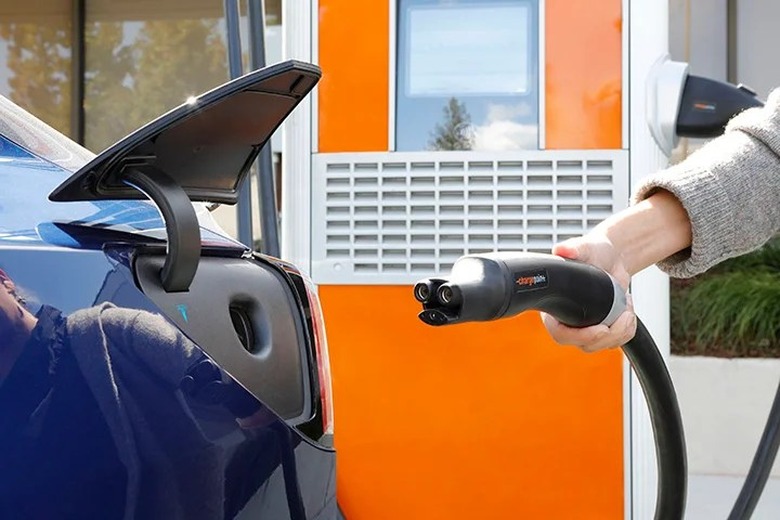EV Chargers Are So Bad, The U.S. Government Is Spending $150 Million To Fix Them
Buying an electric vehicle in the United States still comes with the ever-present concern around range anxiety, especially since the charging network is still kind of hit or miss, depending on what charging station you end up having to deal with.
Take Rivian, for example. While the company is building out its own charging network and plans to change over to Tesla's North American Charging Standard (NACS) connector, starting with models built in 2025, the R1T and R1S still come packed with the CCS charger and rely on third-party chargers to get around — and there lies the problem.
Just recently, a Tesla Cybertruck was spotted giving some emergency charge to a Rivian R1S at a Tesla Supercharger station. It appeared that the Rivian was on a road trip and had tried to get a charge at a third-party charger, and — you guessed it — the charger was down when they arrived, leading them to throw a Hail Mary and head to a Tesla Supercharger station for help. Thankfully, a Cybertruck was there to give the Rivian a boost.
My neighbor shared this picture with me. He got an emergency charge on his Rivian #R1S by a Tesla #cybertruck on a road trip with his family. He is too pissed off at the moment to tell me the story, but I can bet he was stranded by an unreliable, third party #CCS.

This is just one example, but there are so many reports of people who have had problems with trying to charge at a third-party charger that it's kind of embarrassing at this point and a valid reason that people are generally hesitant to make the switch to electric in the country. In fact, it's so bad that the United States government is stepping in.
In a press release, the Biden administration announced it is investing $150 million to improve the reliability of EV chargers across the country. There are 24 grant recipients in 20 states that will "make existing electric vehicle (EV) charging infrastructure more reliable." The grants will be used to "repair or replace nearly 4,500 existing EV charging ports." The grant is part of the government's plan to bring 500,000 EV chargers to life by 2030.
"The EV revolution is here. To make the most of it we must ensure that everyone, from the largest cities to the most rural communities, has access to reliable EV charging infrastructure," said U.S. Transportation Secretary Pete Buttigieg. "These grants bring us another step closer to a national EV charging network that keeps up with the EV transition that's well underway."

While the government is investing $150 million to fix all of these broken CCS chargers, the industry as a whole is readying a switch to NACS. Lucid may have been the most recent EV automaker to jump on the NACS train, but there are already a ton of other companies that have already committed the same.
Over the course of 2023, Mercedes, Rivian, GM, Polestar, Volvo, Nissan, Fisker, and Jaguar all announced similar deals with Tesla to adopt its superior charging connector. All of those companies not only plan to support the NACS charger, but all will gain access to the extensive Supercharger network as well.
I'm glad to see broken chargers get fixed, but the real breakthrough is going to be when we have a country completely covered by more reliable NACS chargers.
